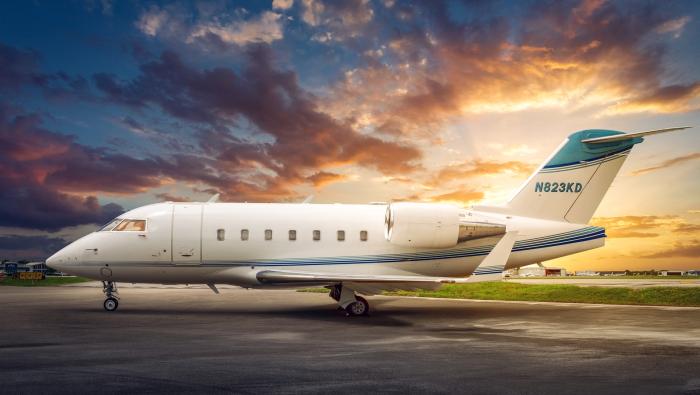For many with travel needs during the Covid-19 pandemic, private aviation might represent the safest option, but given the far-reaching effects of the situation, matters such as in-flight catering bear even closer scrutiny than usual. For flights operating under these current conditions, some wonder if catering should be eliminated or simply limited to pre-packaged snacks.
That was the subject of an NBAA webinar last week featuring John Detloff, v-p of Air Culinaire Worldwide; Paula Kraft, founding partner of DaVinci Inflight Training Institute; and Shannon Weidekamp, chair of NBAA’s Flight Attendant/Flight Technician Committee and lead flight attendant manager and director of client services for a Part 91 and 135 operator.
“I think Covid-19 is going to change the whole industry and how we deal with food, and the training that should be mandatory when it comes to food safety,” said Detloff. “This virus will make all our standards come up in food safety, cleaning, and sanitizing—and this goes in effect for the FBOs, flight departments, caterers, and anyone else who is thinking of serving onboard or handles food for business aviation.”
Kraft noted that, since the start of the pandemic, she has been receiving numerous inquiries from flight departments with questions about how to conduct in-flight catering. “The key is to use a reputable caterer, train, and do your homework when it comes to food safety and where you are going to get that food as well,” she said. “There’s a lot that you as flight departments and operators and individuals need to know about before that food arrives to you.”
In-flight caterers are regulated by both the Food and Drug Administration and local authorities and already operate at the highest levels of food safety. “This was the worst-case scenario that we meet our safety standards by,” said Kraft, “but they’ve enhanced it even more to protect those passengers and crewmembers that are flying now.” Such protocol changes include even more frequent sanitization of their kitchens and refrigerated delivery vehicles with hospital-grade products, regularly scheduled alarms reminding workers to wash their hands and/or change their gloves, wiping down incoming and outgoing packaging with food-grade wipes, and limiting the number of workers on duty in the kitchen at a time.
Kraft explained that in-flight catering kitchens prepare food under the cook-to-chill protocol, where the items are prepared and then swiftly-cooled, using industrial blast chillers, to less than 41 degrees. The food is then kept at that temperature in specialized packaging, through transport in refrigerated delivery vehicles, to the FBO.
While some business aviation operators or crews are resorting to food brought from home or ordered and delivered from local restaurants, those are not the optimal choices, according to Kraft, as that food is prepared under the cook-to-serve regimen where it is expected to be eaten as soon as it is prepared. Such food might never reach a safe storage temperature to prevent the growth of bacteria, even though it might be intended to be served and consumed hours later.
For third-party deliveries, one must also consider its handling by another food safety-untrained individual and the cleanliness of the delivery vehicle. The panelists noted that FBOs should have at least two sets of commercial-grade refrigerators to avoid cross-contamination; one for newly-arrived catering and one for any catering that has been removed from the aircraft for storage. A separate refrigerator should be used for staff food, as well as any left-over catering that is gifted to the line staff.
One trend that Air Culinaire’s Detloff has noted is the double provisioning companies are ordering for outbound flight crews. “They can take a meal back to their hotel and eat because all the restaurants are closed or they don’t want to take the liability or risk factor of having them go out and get exposed to [Covid-19],” he said. Weidekamp added that there are many caterers that will deliver crew meals to the FBO at the destination, as well to help them avoid this situation.
While most flight attendants take pride in the professional meal presentations for passengers, that has taken somewhat of a back seat of late, according to Weidekamp. “Our policy in the current Covid-19 environment is we’re using paper and plastic,” she explained. “The caterers deliver food on wonderful trays and dishes themselves and you can have them plate there and just serve from the dishes, especially if it’s a cold item like a salad or a sandwich.” Not using fine dishware keeps the flight crew from worrying about having to wash and sanitize the dishes, either during, or after the flight. Soft goods such as potholders or dish towels should be laundered after each flight.
Another difference she described is no longer allowing pilots to wander back to the galley to grab some food or snacks during food preparation and advising flight attendants to communicate with the pilots ahead of the flight. “Let them know you want to maintain as sterile an environment as you can as you’re preparing and getting things ready for the passengers.”
When it comes to stocking the aircraft, Weidekamp said that she now wipes down all cans and packages with food-grade antimicrobial wipes before bringing them aboard. And when seeking vital housekeeping supplies that are in short supply such as disposable gloves or sanitizer, she suggests first contacting an aviation supply company or a local restaurant supply company that sells to the public, either in your area or at the destination. She also advised reaching out to your in-flight caterer to see if they can fill your housekeeping supply needs.







